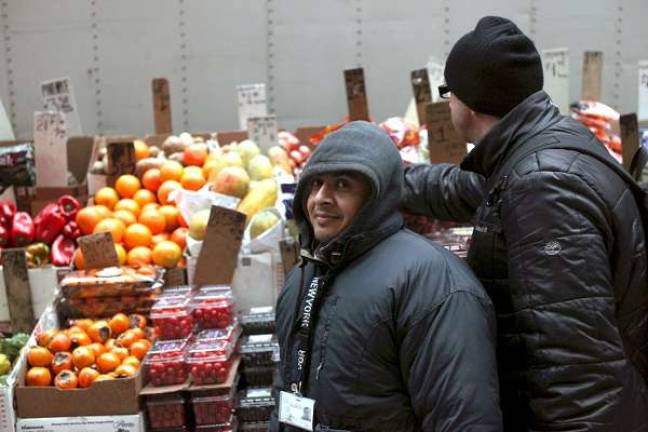Too Many Vendors?

The vendors themselves, however, have not noticed an increase in vendors. Kadio Haci, who has a fruit stand on 68th Street and 3rd Avenue, and works 18-hour days, says that he has been at his stand for almost 20 years, and most of the same vendors have been around as well. In fact, he says, business has been slowly dropping off by 25 percent, so if anything, he notices less vendors than usual.
"You know with the economy, not as many people are out," said Haci. "People like us because we are selling healthy fruit and we sell it cheaply."
But the concerns are not just with sheer numbers, says Birnbaum. The community has also been dealing with vendors who park illegally all day and do not follow police or health regulations.
"These are the concerns: the stands are unsightly and there's a visual blight to the community," said Birnbaum. "Between that, the unsanitary conditions and the general non-compliance, it's quite a mess out there."
The survey, administered by an intern and graduate student at Hunter College, found in December and January, 33 trucks parked illegally, and at least 20 vendors in violation of other regulations like blocking hydrants and tree pits, and tables exceeding the maximum length of eight feet. Birnbaum said that they have been working with the 19th precinct to hand out tickets, and make sure the vendors are complying with the law.
But Husnu Gul, who has a fruit stand a few blocks over from the Metropolitan Museum of Art, said that he tries to follow the law, but often cannot keep up with what it illegal and what is not. He admits to parking his truck illegally all day in front of his fruit stand, but says he has to do that to keep his wares fresh all day.
"My main problem is the police keep changing their minds about the regulations. It used to be you could have a 10-foot table, now it's eight. But sometimes they say six," says Gul. "We have gotten close to $10,000 in tickets in the past couple of years."
Tony Hernandez, who sells hotdogs on 68th Street and Lexington Avenue says that he has heard of other vendors in the area not being extremely clean.
"Whenever they come to check me, I have everything clean. I've never had a problem," he said. "What am I supposed to do about the complaints? Everybody needs to make a living."
But some say that food vendors, even the ones that follow regulations, are negatively affecting the community; local businesses say that they suffer as well.
"They affect our business," said Kevin Ma, the manager at a C-Town grocery store on East 89th Street. "They sell fruits and vegetables, but who knows the quality. They sell it cheap because they don't have rent."
As for solutions, Birnbaum said that in recent years, the Vendor Task Force Committee has recommended standardized street furniture for all vendors, as well as restricting the number of vendors on the streets, but none of these measures can take effect unless the City Council adopts them.